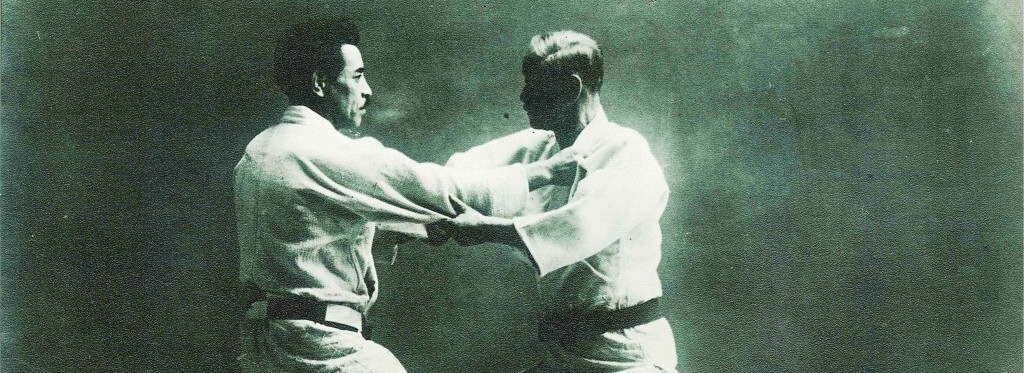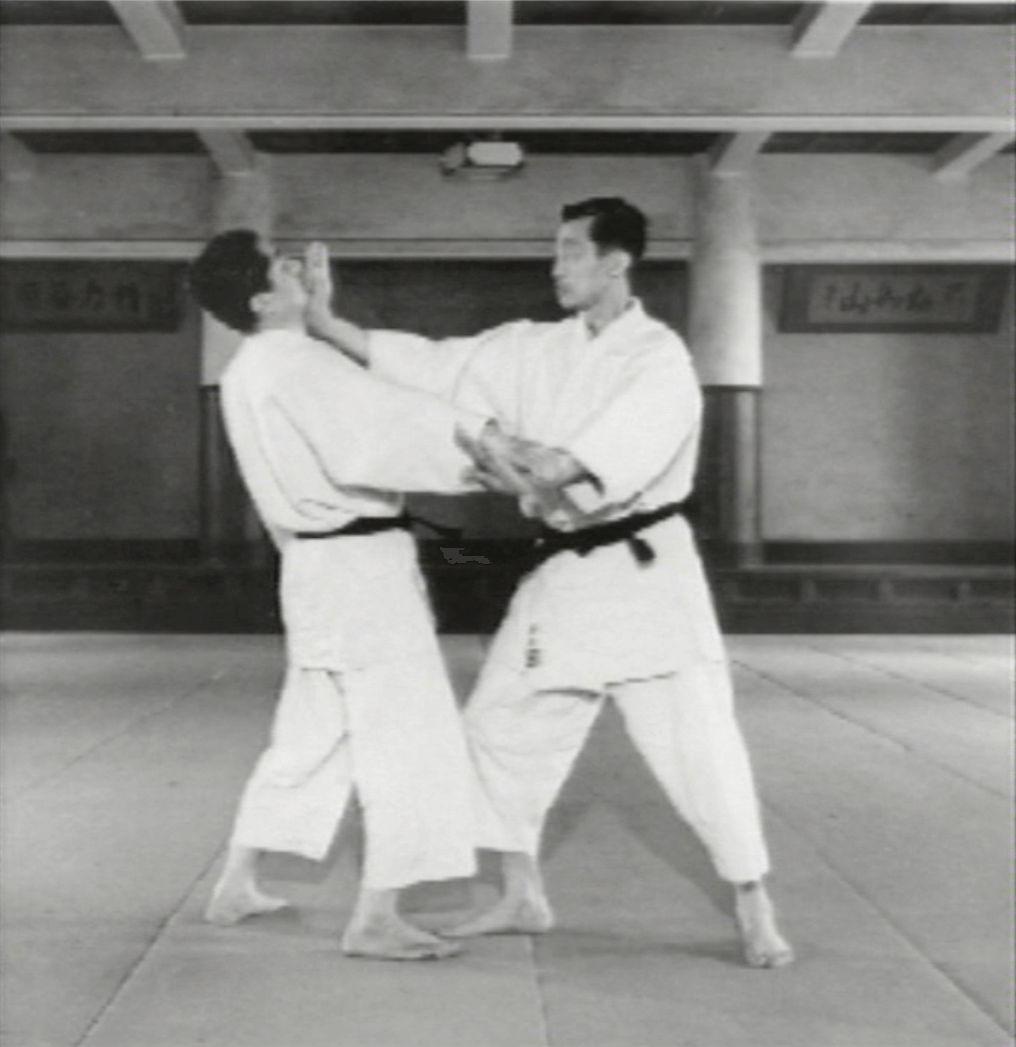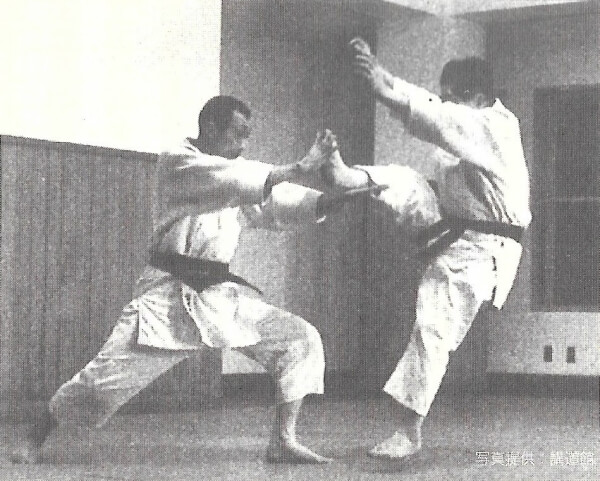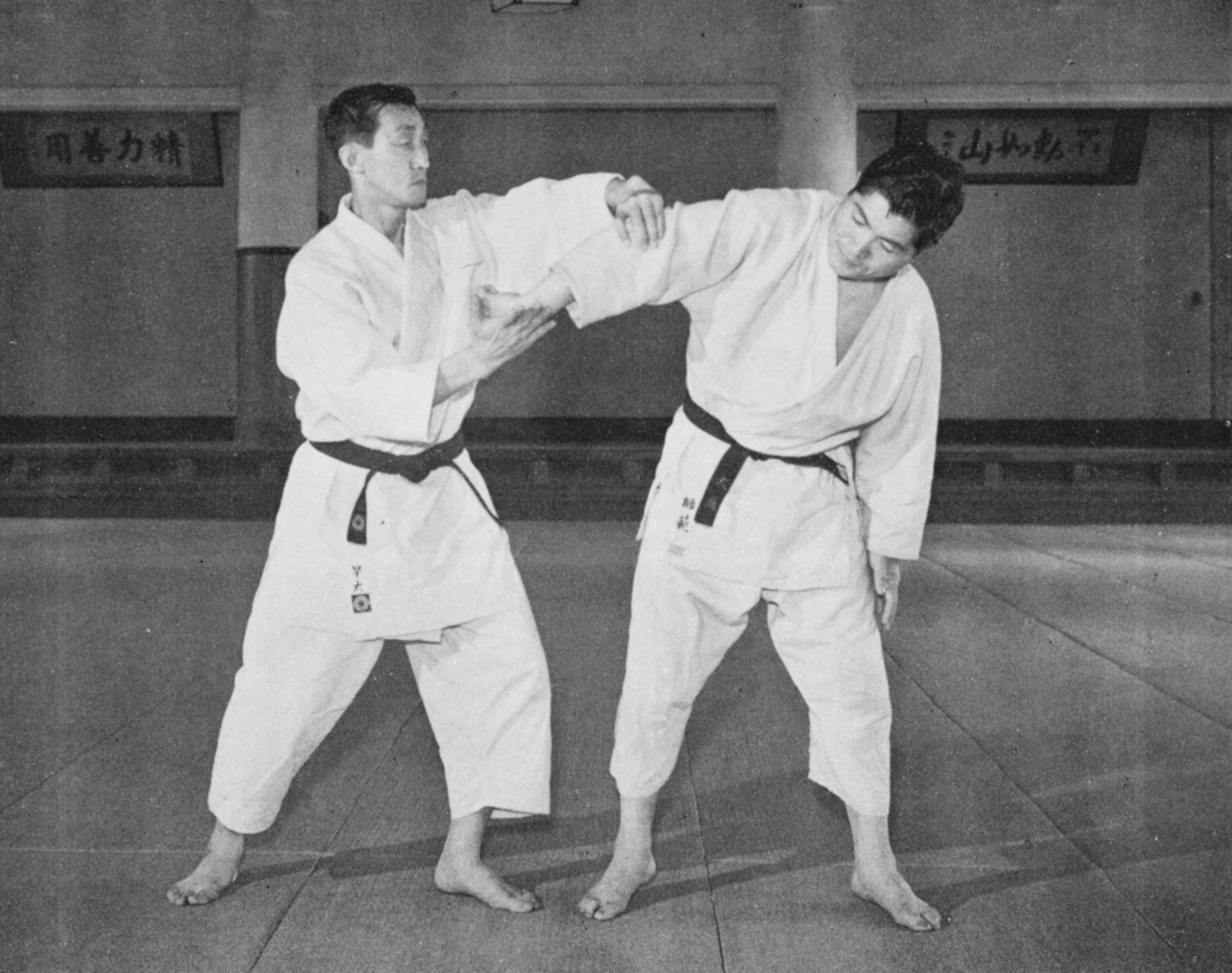
HISTORY

Tomiki – Shomen Ate

Tomiki – Goshin Jutsu

Tomiki – Oshi Taoshi
The history of Renaissance Yawara begins with Tomiki’s first teacher, Jigoro Kano.
According to Tomiki, Kano wanted him to learn Ueshiba’s use of atemi waza (strikes) and kansetsu waza (joint locks) and to develop a system that complemented judo and could be integrated into it. In 1936, Tomiki was ten years into his exploration of aikido at the Kobukan. He visited the elderly Kano to report on his research. Kano reiterated to him, “It is necessary for us to learn techniques that you learned from Ueshiba, but it is not easy to learn.” According to several of Tomiki’s contemporaries, he replied, “If we study those techniques using the ‘Principles of Judo’ or the scientific principles of judo that Master [Kano] discovered, I think that it won’t be impossible.” Two years later, shortly before Kano’s death, he said to Tomiki, “In what was known as jujutsu in the old days, everyone used the same sort of techniques as Ueshiba Sensei. The problem, however, is how to incorporate them into training.”
Kano died in 1938, and he was succeeded by Jiro Nango who continued to work with Tomiki even though Tomiki had relocated to Manchuria. Nango wrote, “Judo is superior to other martial arts in case of standing close, but in case of keeping distance, we must approach an opponent rapidly to control him because he can use a weapon. We must train this skill.” In 1940, Tomiki made a presentation at the Kodokan of what he called hanare judo (“separation judo”). His hanare judo was distinct from the usual kumi judo (“grappling judo”) because it was practiced from rikaku taisei, the distance at which you cannot leg sweep your opponent. It borrowed heavily from Ueshiba’s aiki budo but also the Koshiki no Kata, a form that judo had inherited from Kito Ryu Jujutsu.
The events of World War II overtook Tomiki’s ability to continue his research, and he was not able to pick it up in earnest until the mid-1950’s, when he took a post as professor of physical education at Waseda University. He had spent the intervening years first in Manchuria, then as a Russian prisoner of war, and then working with the US occupying forces in Japan, even touring the United States in 1953. There he taught both judo and aikido, as Ueshiba’s art was now called, but he did not hesitate to ignore Ueshiba’s ban on shiai. He worked on the overlapping concepts of Ueshiba’s aikido and the Koshiki no kata, devising a system of techniques that could be done safely at speed in randori. In Tomiki’s mind, this was the natural evolution of aikido when practiced within the judo philosophy.
By 1956, he had an informal aikido group at Waseda where in 1956, they switched from toshu randori to tanto randori because it forced players into rikaku taisei. This was actually an extension of a view Kano had expounded as early as 1934. Two years later, he created a method of scoring and evaluation and the regents of Waseda allowed him to form the first collegiate aikido club. By 1967, his system – complete with the now familiar seventeen techniques of the Randori no Kata and the modern methodology – had spread to other universities in Japan.
In 1969, he claimed that thousands practiced his art. Tomiki articulated its attraction in an interview with Black Belt, the first published article on his method:
In this assertion, Tomiki’s philosophical foundation becomes evident. While he studied aikido intensely, it was Kano’s judo philosophy which undergirded his work and not Ueshiba’s. As Ueshiba distanced himself from koryu bujutsu and its inherently violent reliance upon shobu ho, literally learning through victory, Kano embraced it in the form of shiai randori, which balanced shobu ho with rentai ho, or the training of the body, and shushin ho, or the development of wisdom. Shiai was a safe way to develop a rounded, practical martial art. Like Kano, Tomiki understood that without this practical laboratory where shobu ho could be developed, aikido would become deficient.
Although Tomiki clearly mastered aikido and was held in very high regard by a number of other aikido masters, his foundational beliefs about aikido were different than the views held by almost everyone else in the aikido sphere of influence. Tomiki’s aikido is not pure aikido in the esoteric sense. Its philosophical basis stems from Kano and judo, which is why it embraces shiai.
Tadayuki Satoh own journey began much the same way as Tomiki with the study of Kodokan Judo. His father, Gohachiro Satoh, was a well known judo teacher in Shizuoka Prefecture and attained an 8th Dan. Gohachiro was a peer of Jigoro Kano and a contemporary of such famous Judoka as Mifune, Nagaoka and Kenji Tomiki. Satoh’s father sent Tadayuki to study at Waseda University and learn from Tomiki. When he first enrolled in Waseda, Satoh trained in both Judo and Aikido, but in his second year of college made the decision to focus solely on Aikido. From the time of his enrollment in Waseda until Tomiki’s death in 1979, Satoh sensei would spend Sundays having tea and training with Tomiki. Satoh was appointed to be Shihan in Aikido of Waseda University in 2007 by the senior Tomiki Aikido Association of Japan, a post that had been vacant for over 20 years since the Tomiki’s death.
In recent years, Satoh has been passionate about exposing the world to the connection between Kodokan Judo and Tomiki Aikido and to help a new generation both understand and appreciate the true intent of Kano’s Judo as well as the immense contribution Tomiki made in his research and fusion of the principles and techniques of Kodokan Judo and Aikido. Due to Satoh Sensei’s unique history and connection to both the founder of judo as well as Tomiki Aikido, he is uniquely qualified to teach on the original tenets of each art as well as their historical and technical connections
